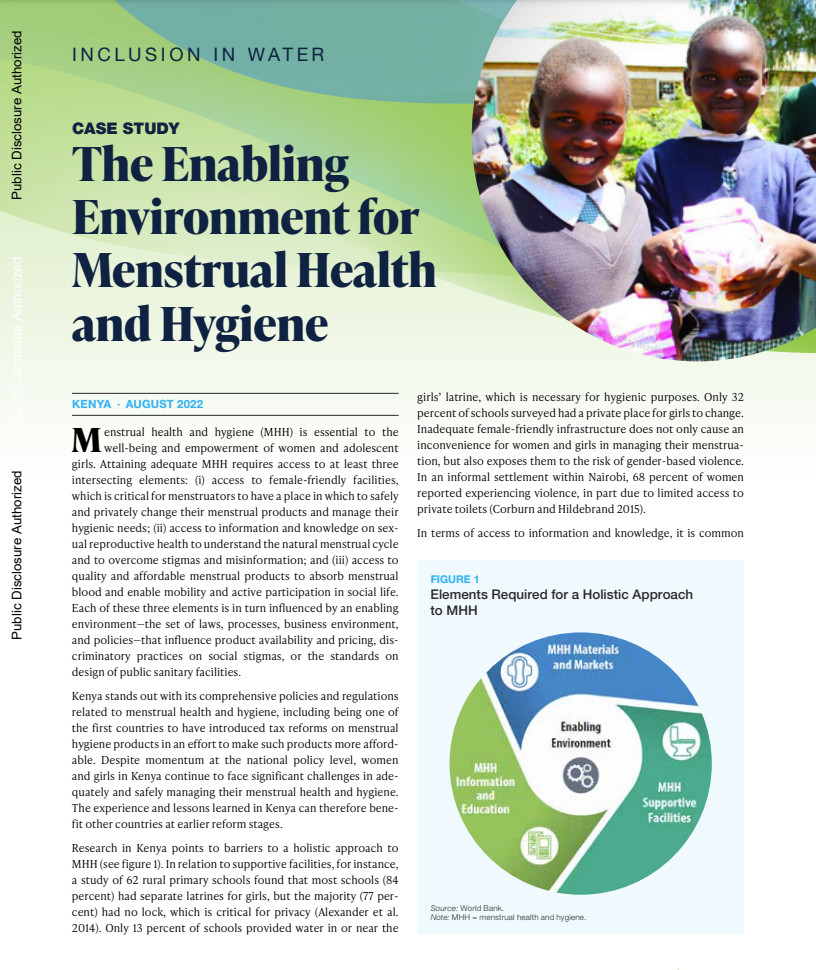The Enabling Environment for Menstrual Health and Hygiene: Case Study - Kenya
 |
nota Aug 2022 ; 4 páginas
Ed. World Bank - Washington
Formato descargable: PdF
Descargable desde el editor
Abstract:
Menstrual health and hygiene (MHH) is essential to the well-being and empowerment of women and adolescent girls. Attaining adequate MHH requires access to at least three intersecting elements: (i) access to female-friendly facilities; (ii) access to information and knowledge on sexual reproductive health; and (iii) access to quality and affordable menstrual products. Each of these three elements is in turn influenced by an enabling environment that influences product availability and pricing, discriminatory practices on social stigmas, or the standards on design of public sanitary facilities. Kenya stands out with its comprehensive policies and regulations related to menstrual health and hygiene, including being one of the first countries to have introduced tax reforms on menstrual hygiene products in an effort to make such products more affordable. Despite momentum at the national policy level, women and girls in Kenya continue to face significant challenges in adequately and safely managing their menstrual health and hygiene. The experience and lessons learned in Kenya can therefore benefit other countries at earlier reform stages.
Palabras claves: |
acceso a saneamiento (CI) (DT) (HP) (ope) , acceso al agua (CI) (DT) (HP) (ope) , género (CI) (DT) (HP) (ope) , higiene (CI) (DT) (HP) (ope) , higiene menstrual (CI) (DT) (HP) (ope) |
País: |
Editor/Difusor: |
|
World Bank - Washington - Estados Unidos |
Si hay un enlace roto, estaremos encantados de recibir un mensaje: communication@pseau.org